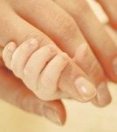|
perinatology.com |
|
|||||||||||||||||||||||||||||||||||||
| Home > Reference >Sample Sizes Necessary to Detect |
||||||||||||||||||||||||||||||||||||||
|
Sample Sizes
Necessary to Detect a Two Fold (100%) Increase In Selected Adverse Pregnancy
Outcomes (80% power, 5% Level of Significance)
Outcome
Denominator
Population rate
Number of Exposed
Pregnancies Needed
Spontaneous Abortion
Enrolled
Pregnancies
15/100
266
Low Birth Weight
Live Births
10/100
261
Fetal Death
Live births
3/100
684
Any major birth defect
Live Births
3/100
684
Cardiovascular defect
Live Births
1/115
2196
Cleft lip with or without palate
Live births
1/930
17311
Stickler syndrome
Live births
1/10000
185,539 |
||||||||||||||||||||||||||||||||||||||
